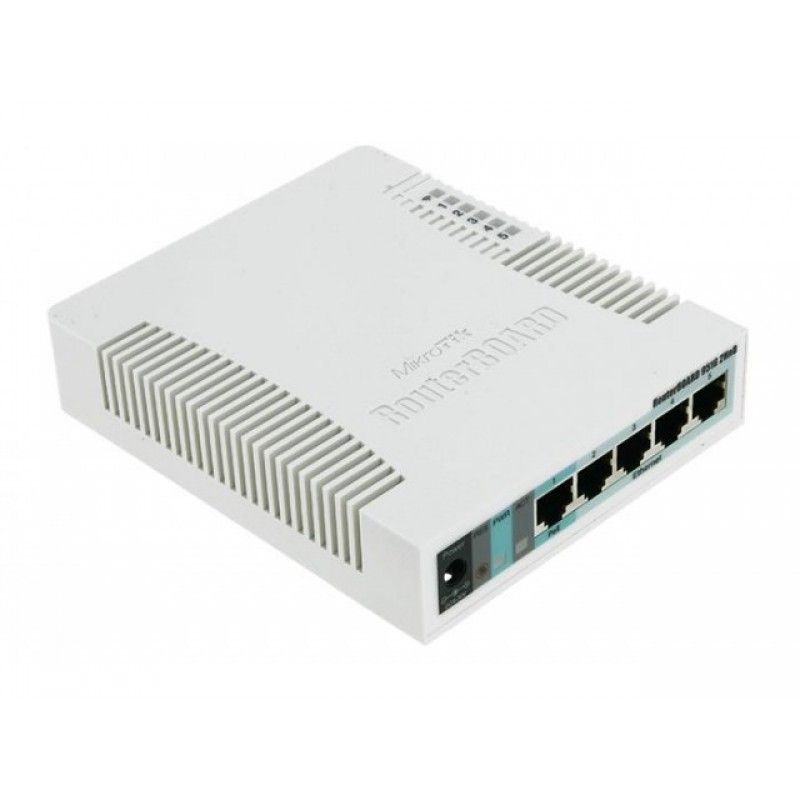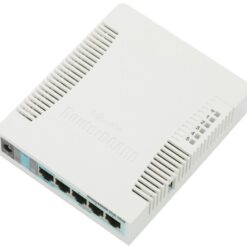Huawei AP761 is an outdoor AP in compliance with the Wi-Fi 6 standard (802.11ax). It stands out with excellent outdoor coverage performance, IP68 waterproof and dustproof design, and strong surge protection capability. The AP provides uplink optical and electrical ports, allowing customers to select different deployment modes and saving customers’ investment. These strengths make the AP ideal for high-density scenarios such as stadiums, squares, pedestrian streets, and amusement parks.
Features:
– As the latest Wi-Fi standard defined in IEEE 802.11, 802.11ax improves the user access capacity and bandwidth in high-density access scenarios, reduces service latency, and enhances user experience.
– Multi-user multiple-input multiple-output (MU-MIMO) on both the 2.4 GHz and 5 GHz frequency bands, allowing an AP to transmit data to and receive data from multiple STAs simultaneously and multiplying the utilization of radio spectrum resources.
– 802.11ax supports 1024-QAM, delivering 25% higher data transmission efficiency than 802.11ac (supporting 256-QAM).
– Orthogonal Frequency Division Multiple Access (OFDMA) technology enables the AP to transmit data to multiple STAs at the same time using different subcarriers, reducing latency and improving network efficiency.
– Spatial multiplexing technology uses basic service set (BSS) colouring mechanism to enable the AP and STAs to distinguish overlapping BSSs, minimizing co-channel interference.
– Target Wake Time (TWT) technology allows the AP and STAs to negotiate the sleep and wake time with each other, thereby improving the battery life of the STAs.
Specifications
– Dimensions (H x W x D) 69 x 200 x 200 mm
– Weight 1,91 kg
– Ports 1 x 10M/100M/GE electrical port
– 1 x SFP optical port(The GE electrical port supports PoE-In)
– Bluetooth BLE 5.2
– LED indicator Indicate the power-on, start up, running, alarm, and fault states of the system
– POWER SUPPLY SPECIFICATIONS
– Power input PoE power supply: in compliance with IEEE 802.3at/af
(When working in 802.3af power supply mode, the AP is restricted in
functions)
- Maximum power consumption 17,7 W
- ENVIRONMENTAL SPECIFICATIONS
- Operating temperature -40 C to +65 C
- Storage temperature -40 C to +85 C
- Operating humidity 0%-100%
- IP rating IP68
- RADIO SPECIFICATIONS
Antenna type Built-in directional antennas
The horizontal and vertical beam widths of 2.4 GHz antennas are 65 and
40 , respectively.
The horizontal and vertical beam widths of 5 GHz antennas are 65 and
20 , respectively.Antenna gain 2,4 GHz: 10 dBi & 5 GHz: 11 dBi
BLE: 5 dBi
Maximum quantity of SSIDs on each radio 16
- Maximum number of STAs 1024 (512/radio)
Maximum transmit power 2,4 GHz: 28 dBm 5 GHz: 27 dBm
Power adjustment increment 1 dBm
Maximum number of nonoverlapping channels 2.4 GHz (2.412 GHz – 2.472 GHz) 802.11 b/g
FAT/FIT AP MODE
- WLAN features Compliance with IEEE 802.11ax and compatibility with IEEE 802.11a/b/g/n/ac/ac Wave 2
- Maximum ratio combining (MRC)
- Space time block code (STBC)
- Cyclic delay diversity (CDD)/Cyclic shift diversity (CSD)
- Beamforming
- Multi-user multiple-input multiple-output (MU-MIMO)
- Orthogonal frequency division multiple access (OFDMA)
- Compliance with 1024-QAM and compatibility with 256-QAM/64-QAM/16-QAM/8-QAM/QPSK/BPSK
- Target wake time (TWT)
- Low-density parity-check (LDPC)
- Frame aggregation, including A-MPDU (Tx/Rx) and A-MSDU (Tx/Rx)
- 802.11 dynamic frequency selection (DFS)
- Short GI in 20 MHz, 40 MHz, and 80 MHz modes
- Priority mapping and scheduling that are compliant with Wi-Fi multimedia (WMM) to implement priority-based data processing and forwarding; automatic and manual rate adjustment (the rate is adjusted automatically by default)
- WLAN channel management and channel rate adjustment
- Automatic channel scanning and interference avoidance
- Separate service set identifier (SSID) hiding configuration for each AP, supporting Chinese SSIDs
- Signal sustain technology (SST)
- Unscheduled automatic power save delivery (U-APSD)
- Control and provisioning of wireless access points (CAPWAP) in Fit AP mode
- Extended service set (ESS) in Fit AP mode
- Advanced cellular coexistence (ACC), minimizing the impact of interference from cellular networks
- Multi-user CAC
- 802.11k and 802.11v smart roaming
- 802.11r fast roaming ( 50 ms)
- Network features Compliance with IEEE 802.3ab
- Auto-negotiation of the rate and duplex mode and automatic switchover between the Media Dependent Interface (MDI) and Media Dependent Interface – Crossover (MDI-X)
- Compliance with IEEE 802.1Q
- VLAN assignment by SSID
- VLAN trunk on uplink Ethernet ports
- Management channel of the AP’s uplink port in tagged or untagged mode
- DHCP client, obtaining IP addresses through DHCP
- Application identification and QoS classification on the AP in local forwarding (direct forwarding) mode for better voice quality (identifiable common applications in the industry: Skype, QQ, and WeChat)
- STA isolation in the same VLAN
- IPv4/IPv6 access control list (ACL)
- Link layer discovery protocol (LLDP)
- Uninterrupted service forwarding upon CAPWAP tunnel disconnection in Fit AP mode
- Unified authentication on the WAC in Fit AP mode
- WAC dual-link backup in Fit AP mode
- Network address translation (NAT) in Fat AP mode
- IPv6 in Fit AP mode
- Telemetry in Fit AP mode, quickly collecting AP status and application experience parameters
- Soft generic routing encapsulation (GRE)
- IPv6 source address validation improvements (SAVI)
- Multicast Domain Name Service (mDNS) gateway protocol QoS features
- Priority mapping and scheduling that are compliant with Wi-Fi multimedia (WMM) to implement priority-based data processing and forwarding
- WMM parameter management for each radio
- WMM power saving
- Priority mapping for uplink packets; flow-based mapping for downlink packets
- Queue mapping and scheduling
- User-based bandwidth limiting
- Adaptive bandwidth management (automatic bandwidth adjustment based on the user quantity and radio environment) for user experience improvement
- Airtime scheduling
- Air interface HQoS scheduling
- Intelligent multimedia scheduling algorithm
- Security features Open system authentication
- WEP authentication/encryption using a 64-bit, 128-bit, 152-bit, or 192-bit encryption key
- CLOUD MODE
- WLAN features Compliance with IEEE 802.11a/b/g/n/ac/ac Wave 2/ax
- Maximum ratio combining (MRC)
- Space time block code (STBC)
- Cyclic delay diversity (CDD)/Cyclic shift diversity (CSD)
- Beamforming
- Multi-user multiple-input multiple-output (MU-MIMO)
- Orthogonal frequency division multiple access (OFDMA)
- Compliance with 1024-QAM and compatibility with 256-QAM/64-QAM/16-QAM/8-QAM/QPSK/BPSK
- Target wake time (TWT)
- Low-density parity-check (LDPC)
- Frame aggregation, including A-MPDU (Tx/Rx) and A-MSDU (Tx/Rx)
- 802.11 dynamic frequency selection (DFS)
- Short GI in 20 MHz, 40 MHz, and 80 MHz modes
- Priority mapping and scheduling that are compliant with Wi-Fi multimedia (WMM) to implement priority-based data processing and forwarding
- WLAN channel management and channel rate adjustment
- Automatic channel scanning and interference avoidance
- Separate service set identifier (SSID) hiding configuration for each AP
- Signal sustain technology (SST)
- Unscheduled automatic power save delivery (U-APSD)
- Network features Compliance with IEEE 802.3ab
- Auto-negotiation of the rate and duplex mode and automatic switchover between the Media Dependent Interface (MDI) and Media Dependent Interface – Crossover (MDI-X)
- Compliance with IEEE 802.1Q
- VLAN assignment by SSID
- DHCP client, obtaining IP addresses through DHCP
- STA isolation in the same VLAN
- Access control list (ACL)
- Unified authentication on the cloud management platform
- NAT
- Telemetry in Fit AP mode, quickly collecting AP status and application experience parameters
- QoS features Priority mapping and scheduling that are compliant with Wi-Fi multimedia (WMM) to implement priority-based data processing and forwarding
- WMM parameter management for each radio
- WMM power saving
- Priority mapping for uplink packets; flow-based mapping for downlink packets
- Queue mapping and scheduling
- User-based bandwidth limiting
- Airtime scheduling
- Air interface HQoS scheduling
- Security features Open system authentication
- WEP authentication/encryption using a 64-bit, 128-bit, 152-bit or 192-bit encryption key
What’s in the box
1x Huawei AP761 Access Point
1x User Guide
Only logged in customers who have purchased this product may leave a review.
Related products
Extenders & Repeaters
Extenders & Repeaters
Extenders & Repeaters
Extenders & Repeaters
Extenders & Repeaters
MikroTik RB951Ui-2HnD – 2.4GHz High Power Desktop AP/MT-RB951UI-2HND
Extenders & Repeaters
Extenders & Repeaters
TP-Link Deco BE85(2-PACK) BE22000 Tri-Band Whole Home Mesh WiFi 7 System
Extenders & Repeaters




Reviews
There are no reviews yet.